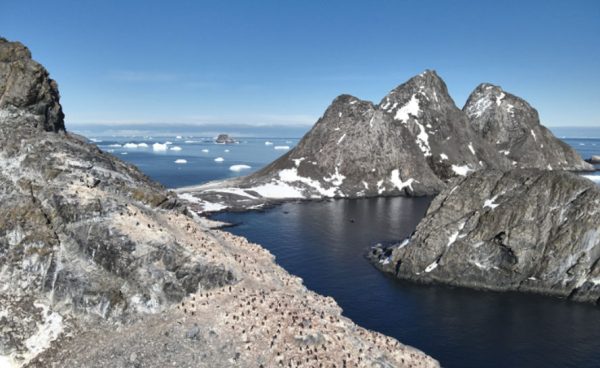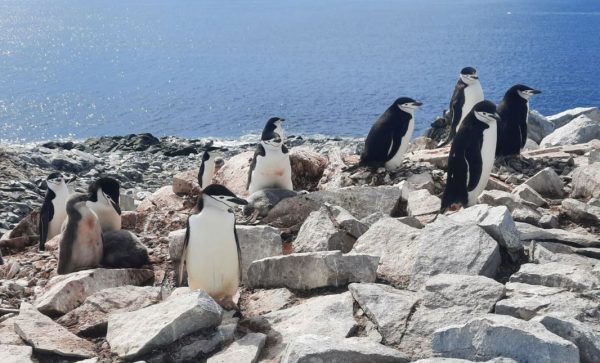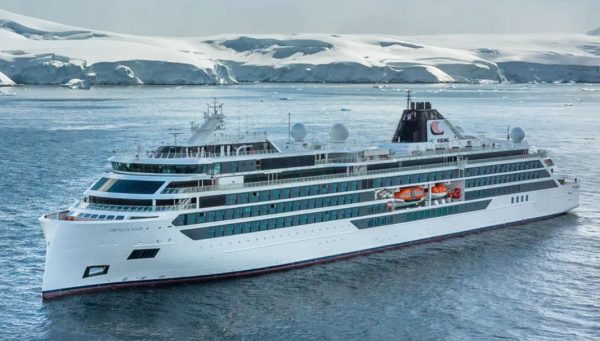LOS ANGELES, 8 March 2024: An expedition team on the ship Viking Octantis has discovered a new colony of chinstrap penguins not previously known to science on Diaz Rock, near Astrolabe Island, in Antarctica.
The discovery occurred last January when the Viking expedition vessel, the Viking Octantis, visited Astrolabe Island, a three-mile-long island located in the Bransfield Strait of the Trinity Peninsula in Antarctica.

Astrolabe Island is home to a chinstrap penguin colony that has yet to be surveyed since 1987. Viking’s scientific partner, Oceanites, a leading field research entity in Antarctic penguin monitoring, conducted a visual and thermal aerial survey during the visit. The fieldwork documented the first survey in nearly 40 years of the known chinstrap penguin colony of Astrolabe Island and, in the process, discovered the additional colony on Diaz Rock. Oceanites will share further details from the survey in a scientific paper to follow shortly.
Meaningful discovery
Viking’s media statement underscores the cruise line’s commitment that every expedition voyage on the Viking Octantis and her identical sister ship, the Viking Polaris, should provide opportunities for meaningful scientific discovery.
The findings also come one year after Viking published its first scientific paper in Polar Research, the scientific journal of the Norwegian Polar Institute, following its expedition team’s encounters with rare giant phantom jellyfish in Antarctica.
“With our third season in Antarctica underway, we are pleased to have supported another significant scientific development that will allow for further understanding of the region,” said Viking chairman Torstein Hagen.
“From the thoughtful design of our expedition vessels, each with a well-appointed Science Lab, to our partnerships with some of the world’s most prestigious institutions, our intention has always been to provide our guests and scientists with opportunities for meaningful discovery during each voyage. We look forward to supporting other critical research opportunities on future voyages.”
Viking has created the world’s leading scientific enrichment environment in an expedition setting with the help of partnerships with academic institutions. During each expedition, visiting researchers from partner institutions are part of the multidisciplinary 36-person expedition team. This group of experts leads the ship’s guests through meaningful scientific research, providing guidance and interpretation during shore excursions and delivering world-class lectures.

Monitoring penguins
For 30 years, Oceanites, an American not-for-profit field research entity, has led Antarctic penguin monitoring. As a scientific partner, Viking supports Oceanites’ fieldwork by mobilising teams of penguin researchers on its Antarctic expedition voyages and providing thermal cameras.
“The Antarctic peninsula is well-travelled and explored, and it is not often we find a new penguin colony,” said Oceanites’ director of science, Dr Grant Humphries. “Our partnership with Viking opened a new opportunity to not only count the chinstrap penguins on Astrolabe Island for the first time since the 1980s, but it also allowed us to locate and map a colony of chinstrap penguins previously unknown to us. This work will allow us to understand better how Antarctic penguin population dynamics are shifting in an ever-changing world.”

Viking expedition cruises
“Viking’s expedition vessels continue to showcase the potential of reimagined ‘ships of opportunity’ and the research capabilities available for scientific efforts,” said Viking’s head of science and sustainability, Dr Damon Stanwell-Smith. “With scientists from our partner organisations on board, like Oceanites, we can conduct real, meaningful research in the regions. We look forward to continuing our partnership with Oceanites and other science partners to bring more findings forward.”
Viking offers destination-focused expeditions in Antarctica, the Arctic, and North America’s Great Lakes. Its expedition fleet includes the Polar Class Viking Octantis and Viking Polaris.
The 378-guest vessels are specifically built for expeditions at an ideal size for safety, comfort, and support of an unrivalled range of activities in remote destinations. With more indoor and outdoor viewing areas than other expedition vessels, guests are as close as possible to the most magnificent scenery on earth.
Viking Octantis
- Only 378 guests
- Crew: 256
- Length: 665 feet
- Beam: 77 feet
- Class: Polar Class 6
- Year built: 2022
For more information on Viking Octantis expedition cruises, visit: https://www.vikingcruises.com.au/expeditions/ships/viking-octantis.html






